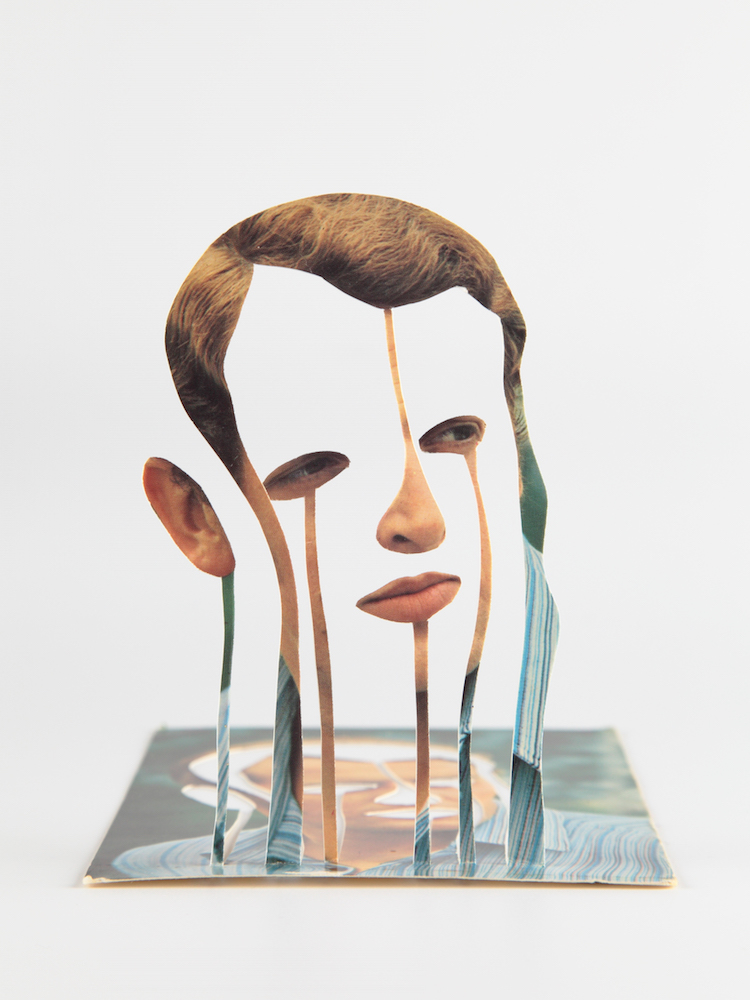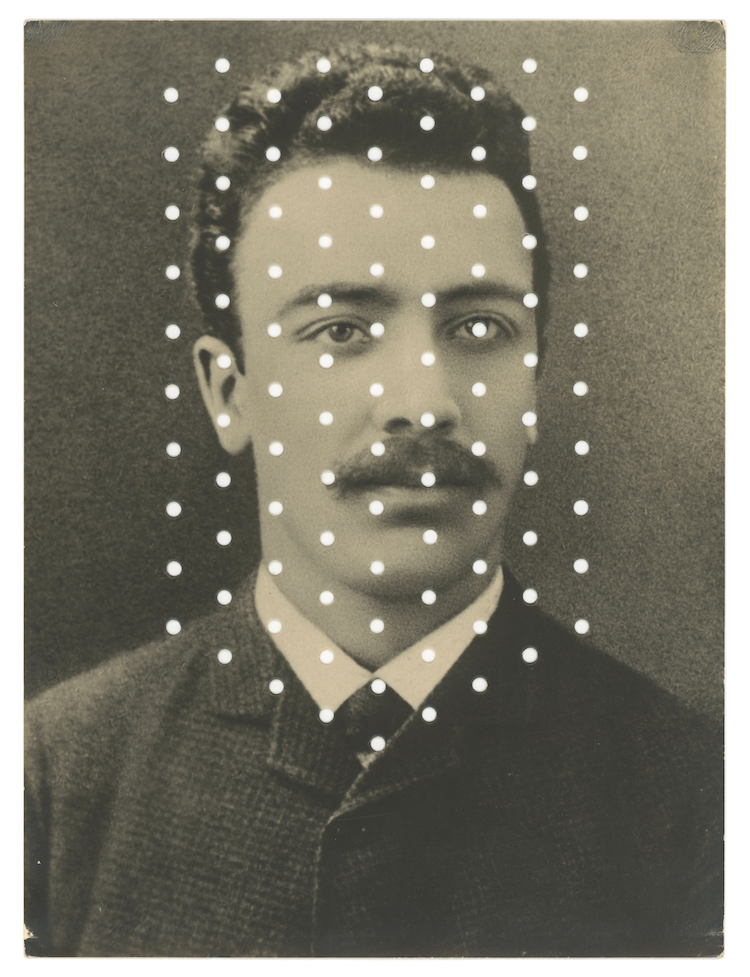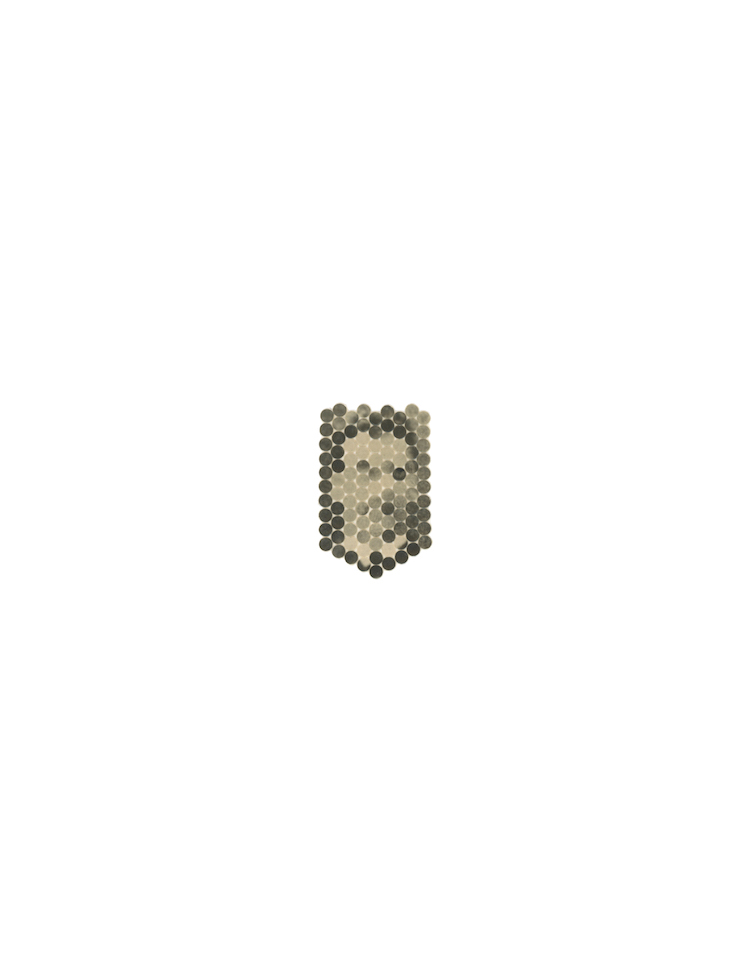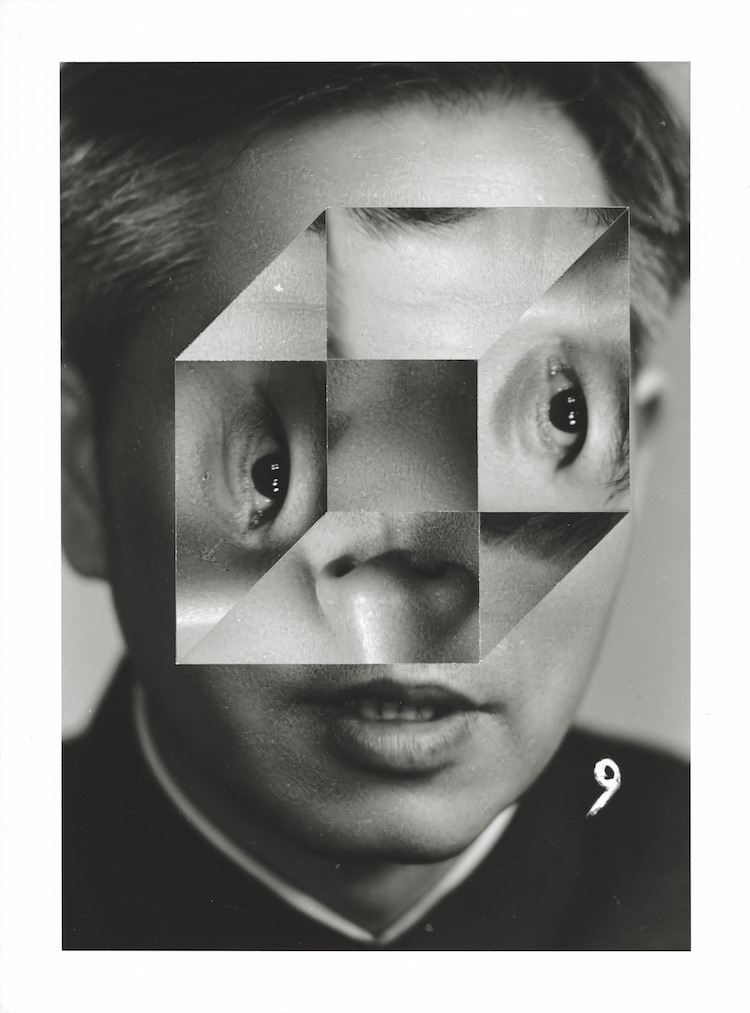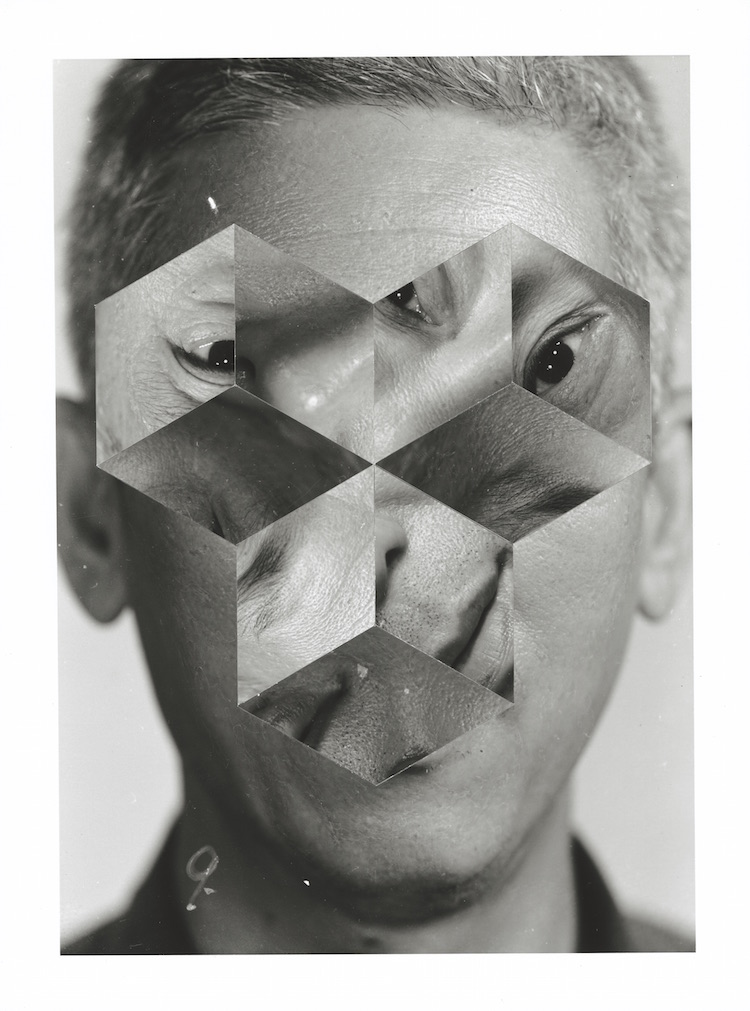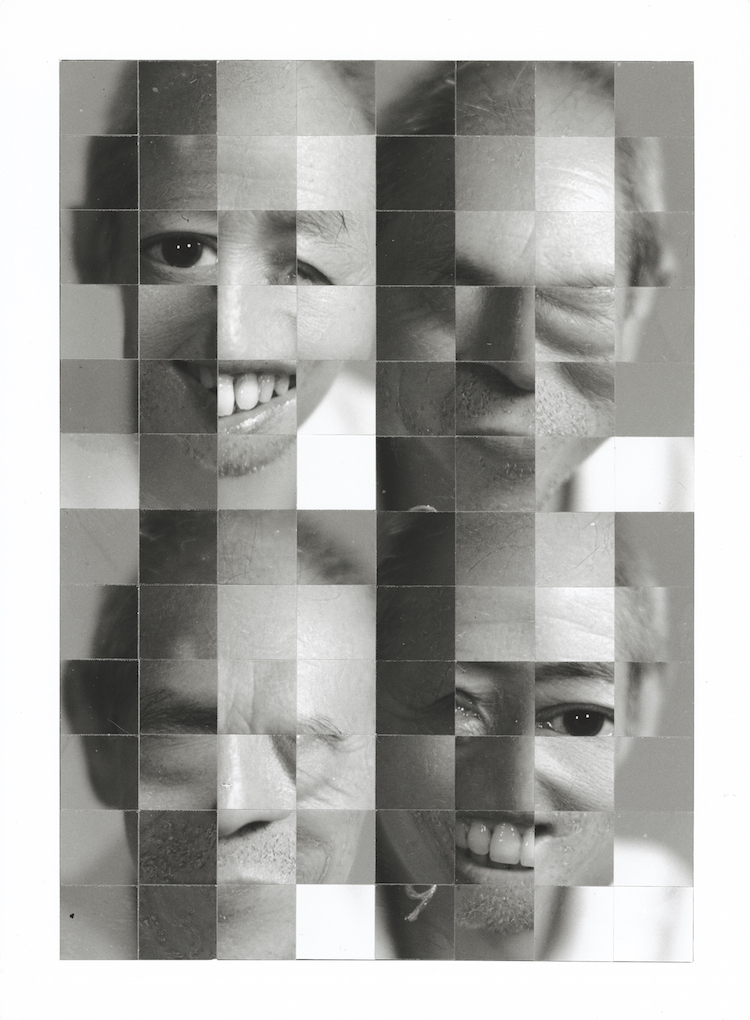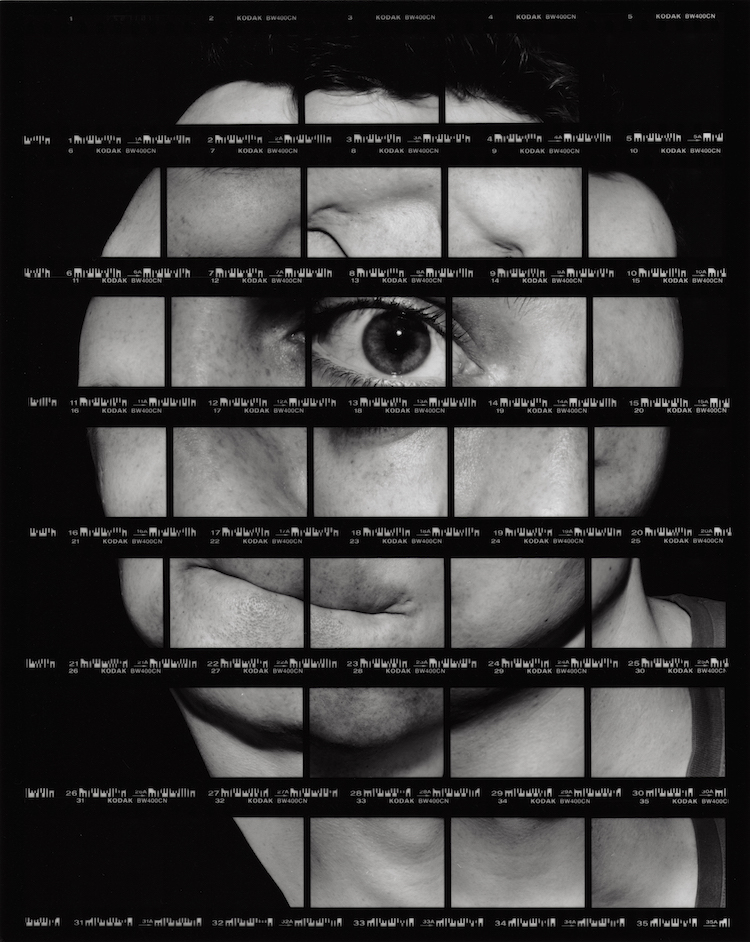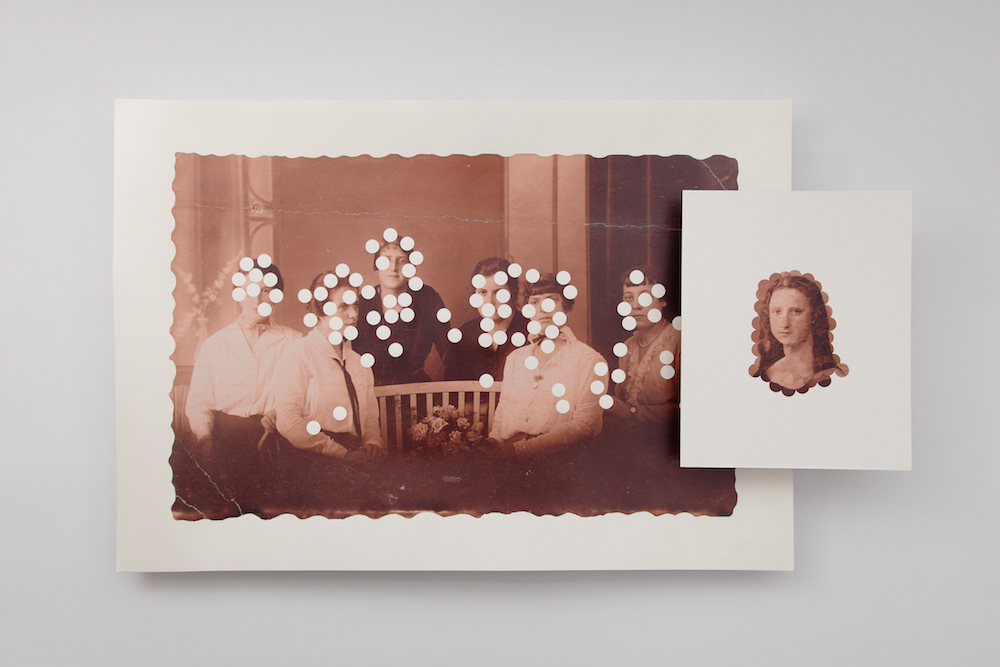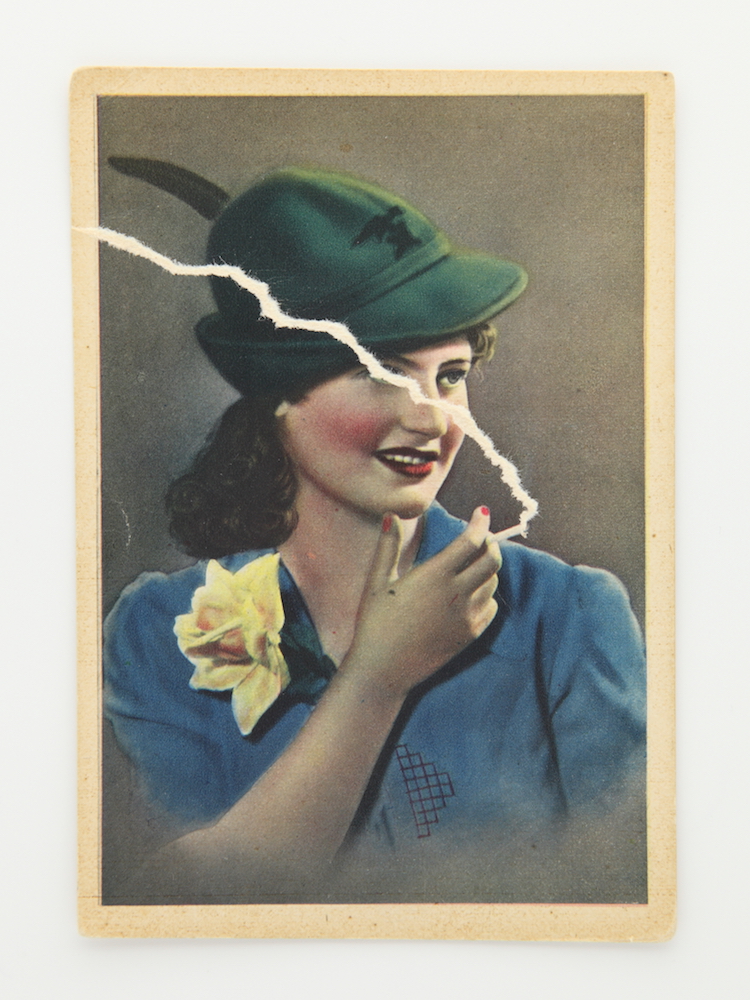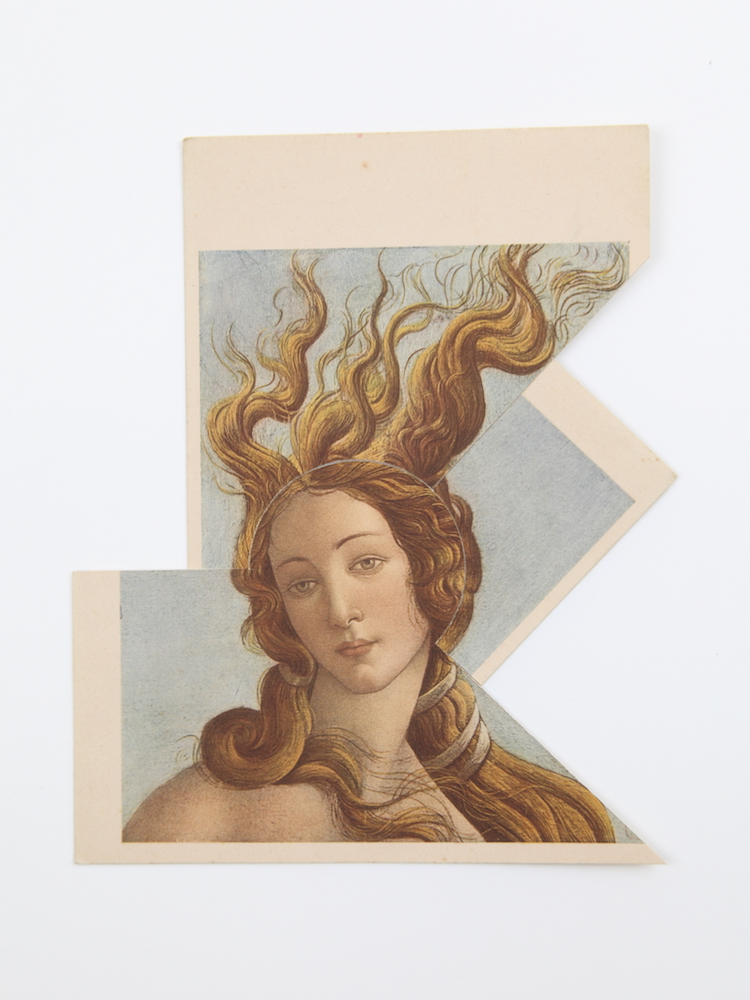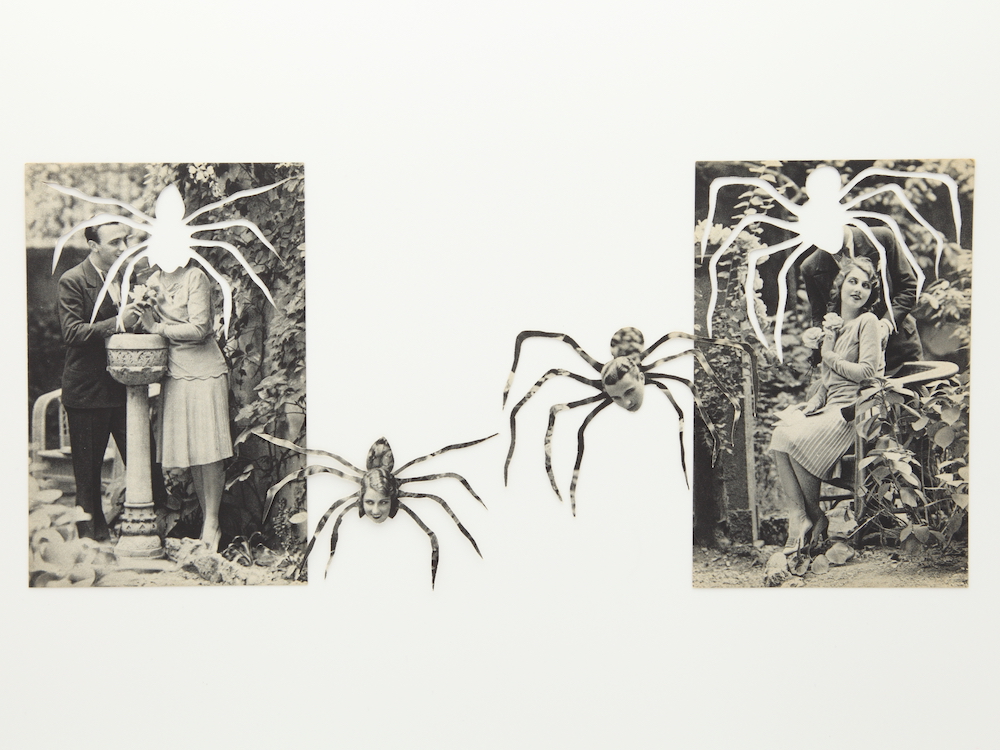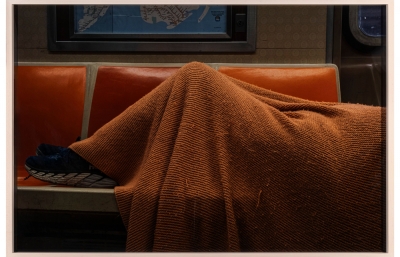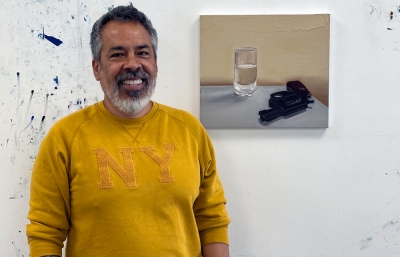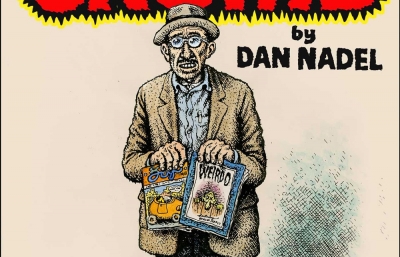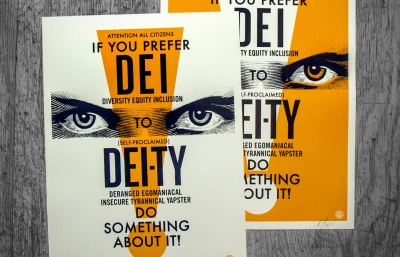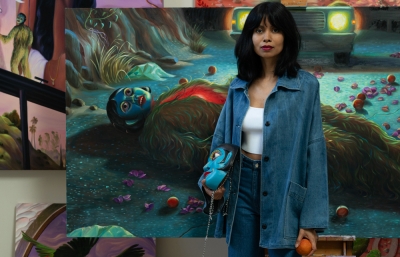Whether Kensuke Koike is tearing an image to pieces, or neatly shredding it into tiny ribbons, there is precision in his method. The mad scientist, a Dr. Frankenstein carefully dissecting and reassembling the bodies of the dead, he creates new life from neglected images. Seeing bounty in the abundance of discarded ephemera, Koike rescues photographs, postcards, and other spurned items he finds at flea markets and brings them home to be reimagined and reanimated in his laboratory. “I deeply believe,” he says, “that every image has the possibility of having a new birth.” The artist refers to this work as Single Image Processing because there is only one rule: nothing can be added or removed. Anything else goes. “The rule is not a lifetime rule, of course,” he explains, “but sometimes, instead of going the easy and secure way, working under a very restricting rule can open another approach.”

One of Them, 2019.
“I usually hate mistakes, especially when I spend many days practicing on cutting a single photo. These failed works I never show and are put in a box that I call 'the coffin' to remember them. Now I have a different view on failure. I like to leave a human error, so I execute perfectly a small mistake, but always well calculated. So my recent works are all 'failed.'”
Koike often shares short videos revealing mind-boggling technique and demonstrating how certain images come to life and perform for the camera. Some even evolve through intermediate forms before morphing again, revealing a process that is as fascinating as the final chimerical product. Koike imagines unexpected new lives for strangers in photographs, arousing childlike amusement, like the thrill of drawing mustaches on pictures in a school textbook, or adding devil horns to a poster on the street. Part of the excitement of viewing his work is comprehending how one thing so flawlessly becomes another, and, in spite of his rule, how one thing becomes many.

From No More, No Less by Kensuke Koike and Thomas Sauvin, 2018.
“I always begin by making facsimiles of a photo to play with it. Sometimes an idea comes instantly, sometimes it takes weeks, but it's not so important what image I use... After I have decided what I want to make from a particular image, I enter the practice phase, because cutting the original image means I only have one chance.”
Constantly deconstructing and re-composing, Koike appears to find flexibility in how little detail is needed for the human brain to recognize an object. By reappropriating or concealing excess visual information, he is able to shape new scenarios without losing the context of the original image. Things fit together because of how they come apart. It's not unlike one of those sliding puzzles where pieces are shuffled around a tray; in this case, Koike is both shaping the pieces and continually shifting the combination. There is no solution, only a new way of seeing.
Transformer, 2016.
“Making the works without showing the process maintains a distance from the viewers. But when I began showing the process, the viewers can imagine what problem a person (in this case, me) faces and how he solves it.”
In a world where real and fake, altered and authentic seem to merge, Koike questions norms, physically distorting our perception of an image with clever calculus and pure originality. —Alex Nicholson

